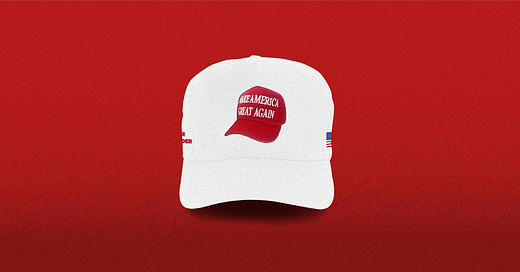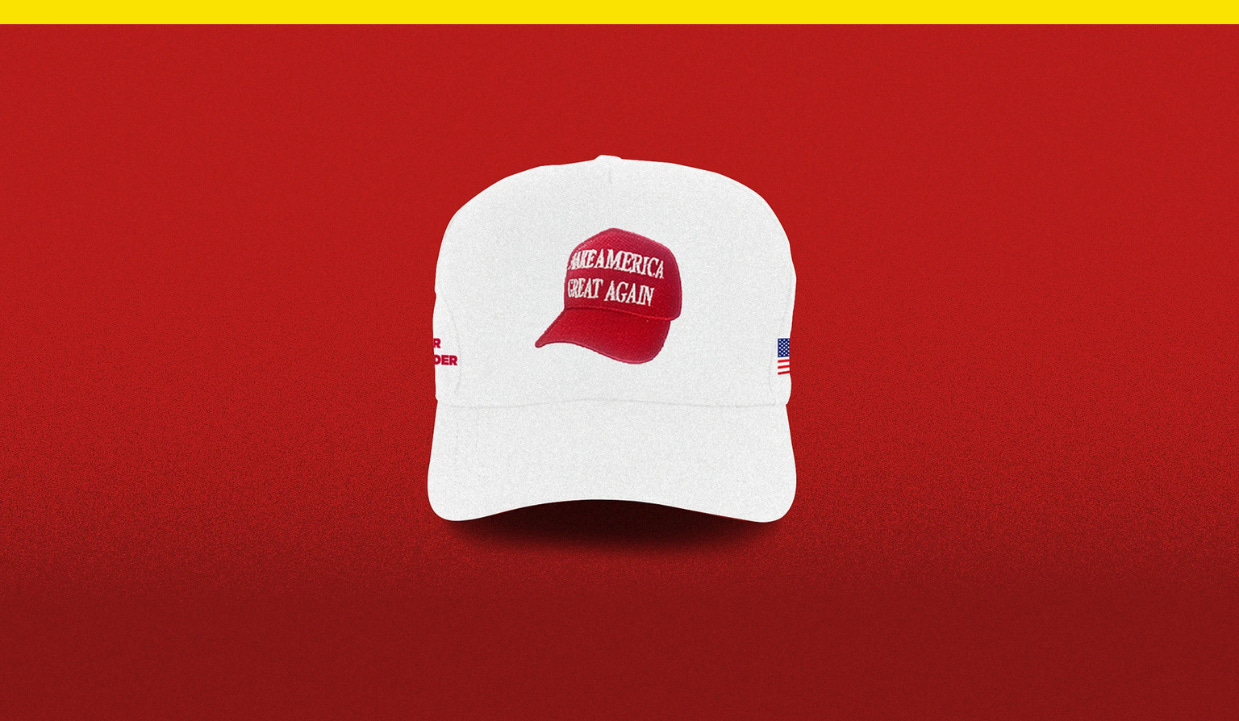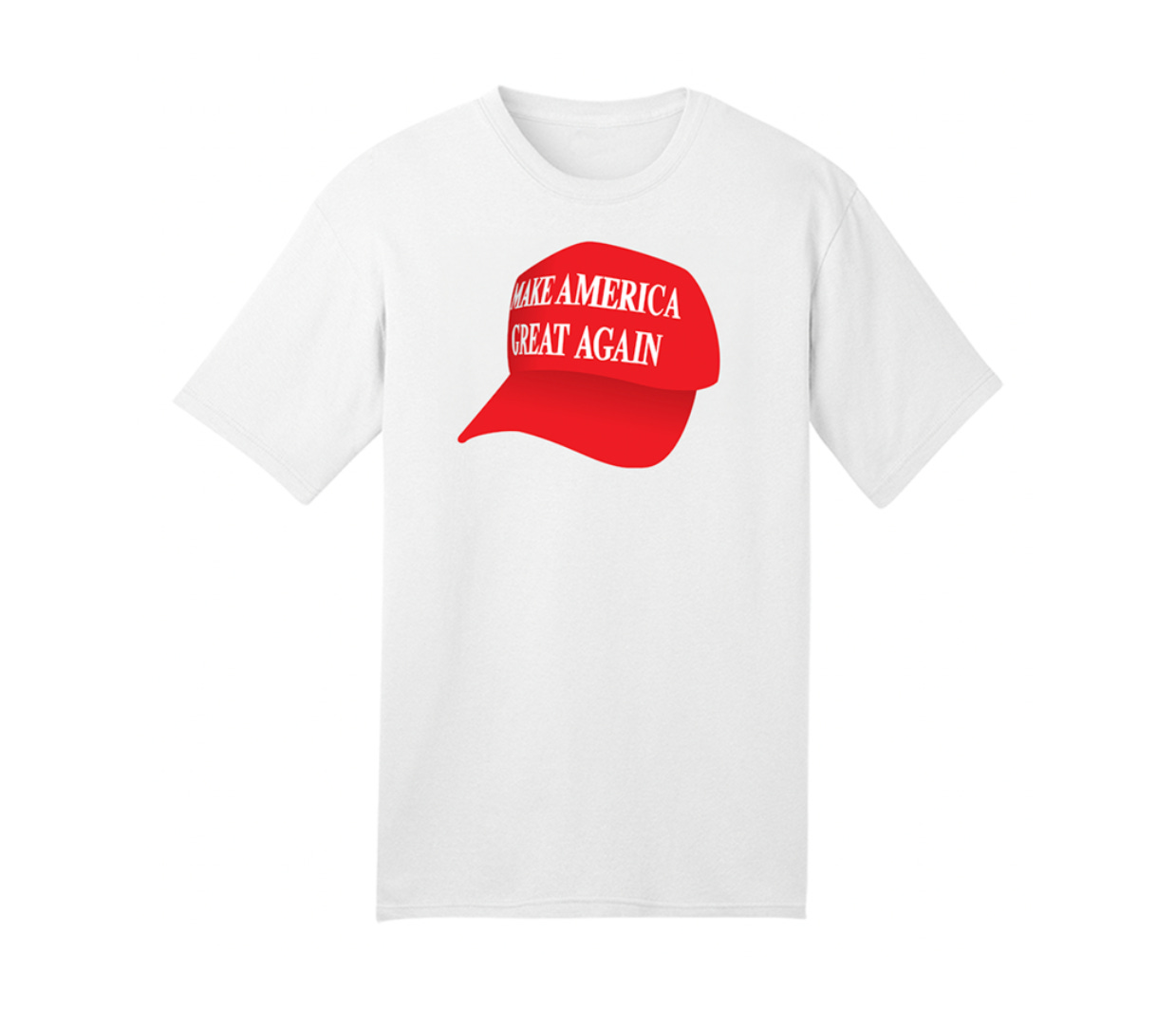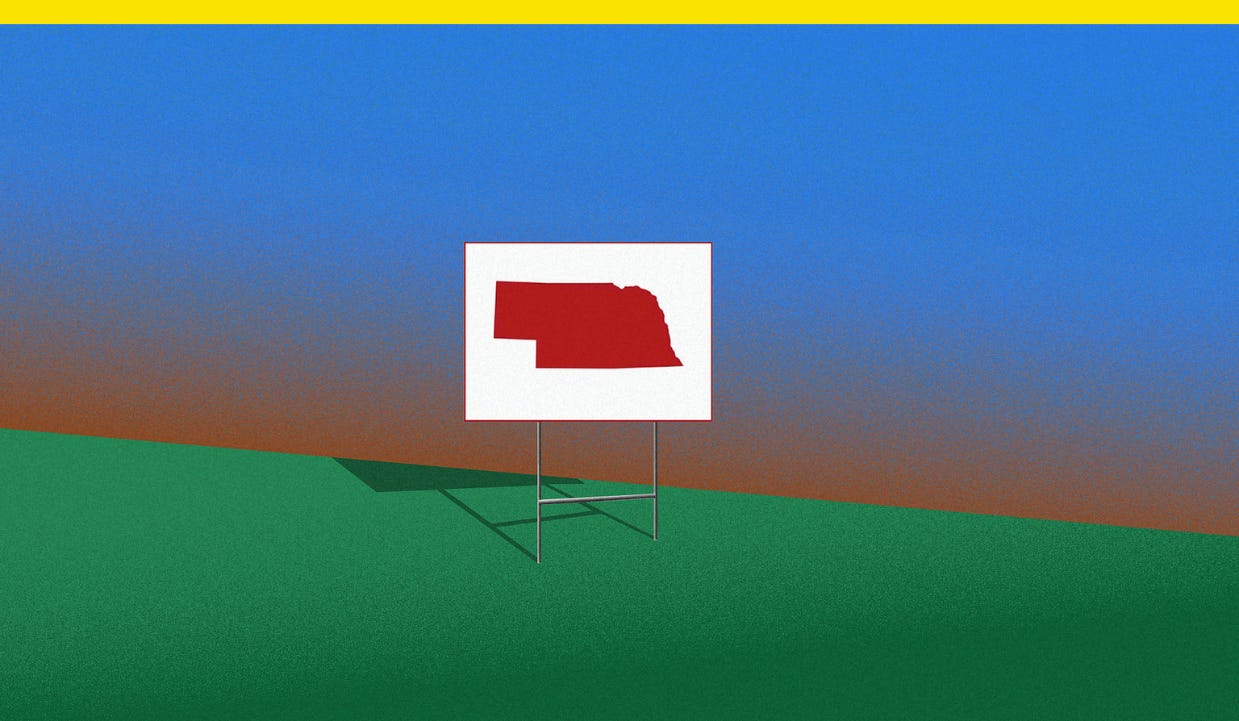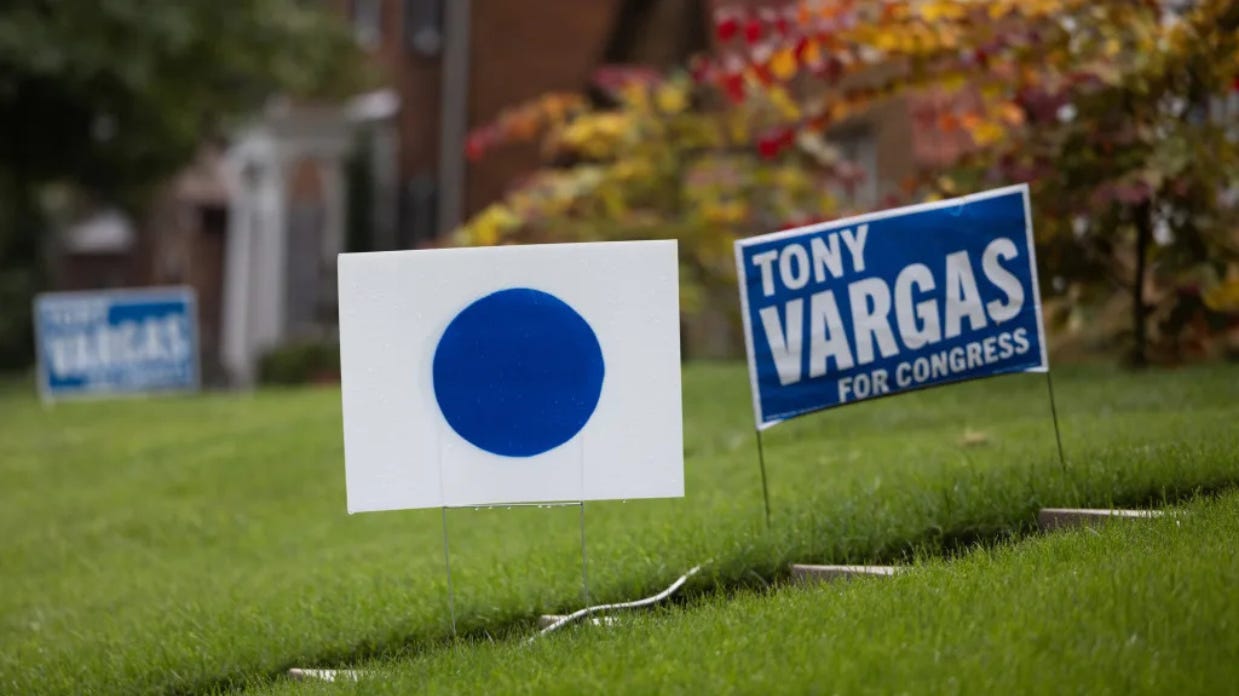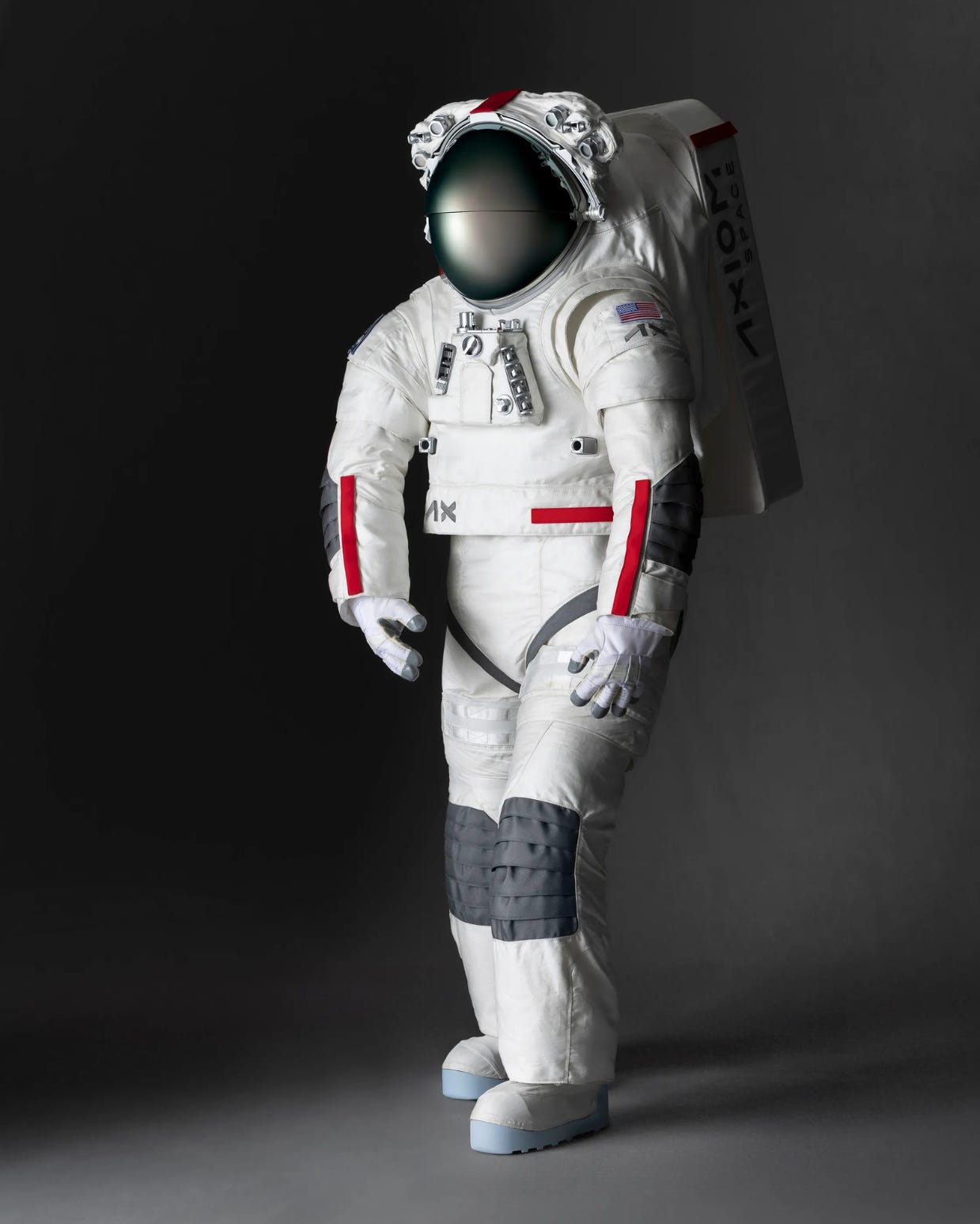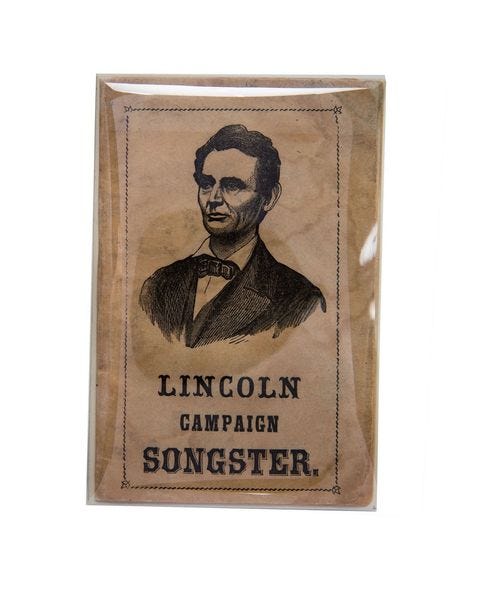Trump’s MAGA Hat hat and the lifespan of political brands
Plus: Republicans responded to blue dot signs in Nebraska with signs of their own
Hello, scroll to the end to see: what the first woman on the moon will wear 🚀
Trump’s MAGA Hat hat and the lifespan of political brands
What do you get the Trump supporter who has everything?
For the latest edition of former President Donald Trump’s “Make America Great Again” hat, his campaign is going meta. The $40 “Little Red MAGA Hat” shows an image of a classic red MAGA hat on the front, and a U.S. flag and Trump’s secondary slogan, “Never Surrender,” on the sides. Trump’s campaign also sells a matching white $36 MAGA-hat tee to complete the set.
The MAGA hat will be 10 years old next summer, but its continued popularity among Trump supporters shows that the campaign still finds value in its most famous merch. Trump first wore a MAGA hat in summer 2015 when he announced his candidacy. His son-in-law, Jared Kushner, wrote in his memoir that the campaign eventually sold as much as $80,000 worth of hats a day in 2016.
By Election Day 2016, Trump’s campaign sold the hat in just three styles: red, white, and camouflage. By 2020, that number had grown to nine different styles. By then, Trump had gone all-in on hats with a “Keep America Great” hat for Trump’s short-lived 2020 slogan, as well as MAGA hats that just had the initials instead of writing out the full slogan. There were “MAGA Mama” hats and hats that said make “Farmers” and “Space” great again. There have been limited-edition holiday editions for Easter, Christmas, and Halloween. The campaign did not reply to a request for comment on its hat strategy.
The shelf life of a successful two-time presidential campaign brand is about six years, if you consider candidates typically announce their campaign the year before an election and run for reelection five years later. For Trump, who’s been running for president for nearly a decade now, the longtime visual markers of his campaign—from the red hats and the long red tie to his boxy campaign logo—are ancient in political-branding years.
Yet, Trump’s campaign has found ways to refresh old signifiers and create new ones, like updating his campaign logo and introducing a secondary “Never Surrender” black-and-white logo to go along with a darker us-versus-them message of revenge that Trump has campaigned on in this election cycle. His campaign has also emphasized and raised money off imagery of his mug shot and raised fist after the assassination attempt. The Little Red MAGA Hat is another example of branding diversification.
This is what MAGA 2024 looks like.
Republicans responded to blue dot signs in Nebraska with signs of their own
After Democrats in Nebraska’s 2nd Congressional District showed their support for Harris with simple blue-dot yard signs, their Republican neighbors responded in kind.
Unlike most winner-take-all states, Nebraska divides its Electoral College votes among not just its statewide winner but also its congressional districts. Because of that, voters in the more liberal Omaha area can still help elect Harris in their district even if the rest of the state votes for Trump.
Ahead of Election Day, blue-dot signs have become popular yard decorations in the area to symbolize the district’s potential to be a “blue dot” in the larger “red” state. President Joe Biden won the district in 2020 by fewer than 23,000 votes, and Republicans are trying to prevent Harris from repeating that with yard signs of their own.
Republican Ellen Ehlers first put up a red-dot sign with a wavy yellow combover as a nod to Trump. And Red State Nebraska, a political committee working to keep the state entirely in Trump’s column, is distributing signs that show a simple red map of the state on a white yard sign. Theresa Thibodeau, a county Republican Party chair and one of the group’s founders, told the Omaha World-Herald they had about 1,000 signs accounted for earlier this month.
Trump has previously called for Nebraska to ditch its winner-takes-all system—a move that the state’s Republican Gov. Jim Pillen shot down. The ploy could have killed the blue-dot movement then and there; instead, these once mysterious signs have only become more well known.
“It’s crazy how many blue dots are popping up,” Ruth Huebner-Brown, an Omaha resident who came up with the idea for the purposefully minimalist signs with her husband, tells me. “Our little blue dot certainly has gained a lot of attention.”
The simplicity and symbolism of the wordless signs has indeed resonated with Omaha-area voters. Red State Nebraska’s website says it’s currently out of signs, and Blue Dot Energy, a Facebook page for the area’s Harris supporters, has more than 11,000 members. Organizers estimate they’ve distributed about 10,000 blue-dot signs.
Politics can often inspire crass or crude public displays of partisanship, from “FJB” flags to naked statues of Trump, but Nebraska’s simple red and blue signs represent a more “Midwest nice” approach. And if yard signs are any indicator of potential voter turnout, Election Day in Omaha this year could be huge.
Have you seen this?
Why are political campaigns always guilt-tripping us to donate? While fundraising requests focused on urgency are a tried and true method, some Democrats are beginning to ask if it might be better to, as you suggested, bring in a little more policy talk. [Vox]
How LaQuan Smith became the go-to designer for powerful women like Kamala Harris, Beyoncé, and Rihanna. Last month, at a black tie event for the Congressional Black Caucus Foundation in Washington, Harris needed something with a bit more glamor. And for that, she turned to one of her go-to designers, LaQuan Smith. [Fast Company]
The first woman on the moon will wear this Prada spacesuit. The outfit has landed. This is the Prada co-designed spacesuit that will be worn by the first woman and the first person of color ever to land on the moon as they take their first steps on the lunar surface. According to NASA, that historical moment might arrive as early as September 2026. [Vogue]
Why the Harris campaign has spent $11 million on a Facebook page with 1,000 followers. Millions of people in battleground states are being served ads on Facebook and Instagram from an obscure page calling itself “The Daily Scroll.” [CNN]
History of political design
Brought to you by Whig, my new newsletter about politics, First Families, and pop culture. Subscribe here.
Lincoln Campaign Songster (1864). This was the 1860s version of Brat. In politics as in pop music, the image of Abraham Lincoln on the cover of this collection of campaign songs in support of his reelection was designed to make him look young, picturing him without the beard he wore in office. Among the songs included in the songsters were “Shout Aloud For Lincoln” and “Union and Lincoln,” according to James E. Arsenault & Company, which sells rare books and ephemera.
Portions of this newsletter were first published in Fast Company.
Politics in the front, pop culture in the back
Subscribe to my new free newsletter about politics, First Families, and pop culture:
Like what you see? Subscribe for more:

